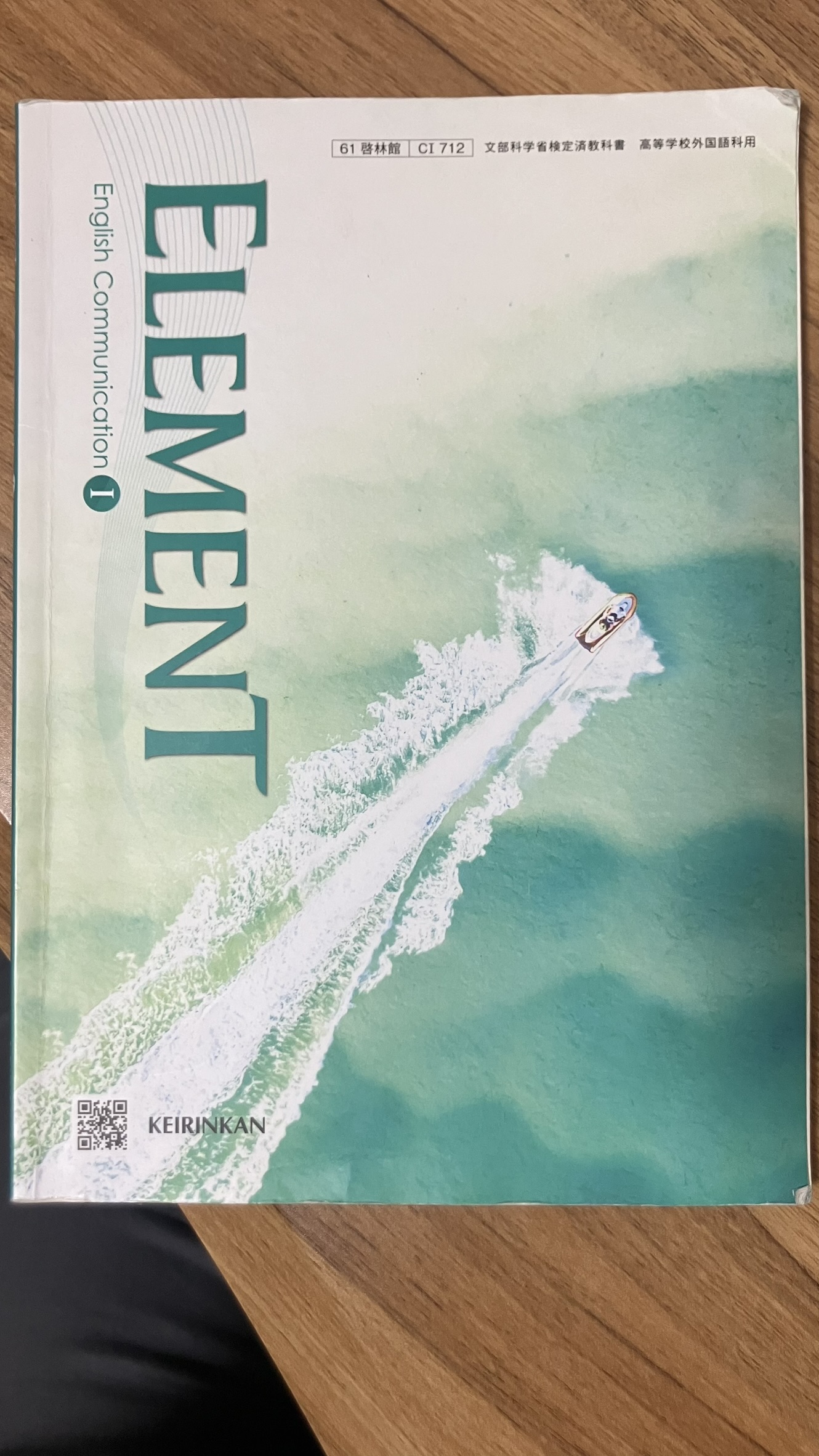He realized it was a new way to make notes because the notes had means of both attachment and removal.
原文
- Although he had many setbacks and failures through his experiments, it became possible to make the adhesive both temporary enough and permanent enough.
品詞分解と文型の分類
- 主語(S): it
- 動詞(V): became
- 補語(C): possible to make the adhesive both temporary enough and permanent enough
- 文型: 第二文型 (SVC)
文法の詳細な説明
- 接続詞: "Although" は譲歩を表し、「~だけれども」の意味。
- 主語 "it": 仮主語として用いられ、真主語は後の "to make the adhesive..."。
- 不定詞 "to make the adhesive both temporary enough and permanent enough": 「接着剤を一時的にも永久的にも十分な強度にすること」を意味し、補語 "possible" を説明。
翻訳
彼は実験を通じて多くの挫折や失敗を経験しましたが、接着剤を一時的にも永久的にも十分な強度にすることが可能になりました。
単語の解説
-
setback
-
adhesive
-
temporary
原文
At first, other people in his company were not impressed by the products, but once the sticky notes were on sale, they soon became very popular.
品詞分解と文型の分類
-
主語(S): other people in his company
-
動詞(V): were not impressed
-
修飾語(M): by the products
-
従属節:
- 主語(S'): the sticky notes
- 動詞(V'): were
- 補語(C'): on sale
- 接続詞: but
-
文型: 主節は第二文型 (SVC)、従属節は第二文型 (SVC)
文法の詳細な説明
- "were not impressed": 状態を表す受動態で、「感銘を受けなかった」という意味。
- "once the sticky notes were on sale": 時を表す副詞節で、「接着メモが販売されるとすぐに」という意味。
翻訳
最初、会社の他の人たちはその製品に感銘を受けませんでしたが、接着メモが販売されるとすぐに非常に人気を得ました。
単語の解説
-
impress
-
on sale
原文
In 1980 the sticky notes were commonly used in the United States and by early 1981 sales in Europe were as high as those in the United States.
品詞分解と文型の分類
-
主語(S): the sticky notes, sales in Europe
-
動詞(V): were commonly used, were
-
修飾語(M): in the United States, by early 1981
-
補語(C): as high as those in the United States
-
文型: 第一文型 (SVM)、第二文型 (SVC)
文法の詳細な説明
- "were commonly used": 受動態で、「一般的に使用されていた」を意味する。
- "as high as those in the United States": 比較表現で「アメリカと同じくらい高い」と説明。
翻訳
1980年には、接着メモはアメリカで一般的に使われており、1981年初頭までにはヨーロッパでの売上がアメリカの売上と同じくらい高くなりました。
単語の解説
-
commonly
-
sales
このペースで最後まで一気に進めます!
原文
- The second story of serendipity took place during World War I.
品詞分解と文型の分類
- 主語(S): The second story of serendipity
- 動詞(V): took place
- 修飾語(M): during World War I
- 文型: 第一文型 (SVM)
文法の詳細な説明
- "took place": 自動詞の熟語で「起こる、行われる」という意味。
- 修飾語: "during World War I" は時を表す副詞句で、「第一次世界大戦の間に」を意味する。
翻訳
セレンディピティの2つ目の話は、第一次世界大戦中に起こりました。
単語の解説
-
serendipity
-
World War I
- 発音: ワールド ウォー ワン
- 意味: 第一次世界大戦
原文
At that time, Alexander Fleming was sent to France to take care of wounded soldiers.
品詞分解と文型の分類
- 主語(S): Alexander Fleming
- 動詞(V): was sent
- 修飾語(M): to France to take care of wounded soldiers
- 文型: 第一文型 (SVM)
文法の詳細な説明
- "was sent": 受動態で「送られた」を意味する。
- 修飾語: "to take care of wounded soldiers" は不定詞で目的を表し、「負傷兵を世話するために」を意味する。
翻訳
その当時、アレクサンダー・フレミングは負傷兵を世話するためにフランスに派遣されました。
単語の解説
-
wounded
-
take care of
原文
Doctors then were depending on antiseptics to cure the soldiers.
品詞分解と文型の分類
- 主語(S): Doctors
- 動詞(V): were depending
- 修飾語(M): on antiseptics to cure the soldiers
- 文型: 第一文型 (SVM)
文法の詳細な説明
- "were depending": 過去進行形で「頼っていた」という意味。
- 修飾語: "on antiseptics to cure the soldiers" は前置詞句で、「負傷兵を治療するために消毒剤に頼っていた」を説明。
翻訳
当時、医師たちは負傷兵を治療するために消毒剤に頼っていました。
単語の解説
-
antiseptic
-
cure
原文
Fleming, however, observed that the most common antiseptic did more harm than good, in that it killed the white blood cells faster than it killed the bacteria.
品詞分解と文型の分類
- 主語(S): Fleming
- 動詞(V): observed
- 目的語(O): that the most common antiseptic did more harm than good, in that it killed the white blood cells faster than it killed the bacteria
- 文型: 第三文型 (SVO)
文法の詳細な説明
- "observed": 「観察した」という意味の他動詞。
- 目的語の名詞節:
- "did more harm than good": 「利益よりも害をもたらした」という比較表現。
- "in that it killed~": 理由を補足する副詞句で、「白血球を殺すのが細菌を殺すよりも早かったため」と説明。
翻訳
しかし、フレミングは最も一般的な消毒剤が利益よりも害をもたらしていることを観察しました。それは、細菌を殺すよりも早く白血球を殺していたからです。
単語の解説
-
harm
-
white blood cell
一気に進めています。この調子で続けていきます!
原文
He knew this was bad because the white blood cells are the body's natural defenders against bacteria.
品詞分解と文型の分類
文法の詳細な説明
- 主節 "He knew this was bad": 動詞 "knew" に続く名詞節 "this was bad" が目的語として機能。
- 従属節 "because~": 接続詞 "because" が理由を説明。「白血球は細菌に対する体の自然な防御者であるため」と述べる。
翻訳
彼はこれが悪いことであると知っていました。それは、白血球が細菌に対する体の自然な防御者だからです。
単語の解説
-
defender
-
natural
原文
In 1922, while Fleming was suffering from a cold, he made a culture from some of the liquid from his own nose.
品詞分解と文型の分類
文法の詳細な説明
- 従属節 "while~": 時を表す接続詞 "while" が従属節を導き、「風邪をひいている間に」という状況を説明。
- 主節 "he made a culture": "from some of the liquid~" が「自分の鼻から出た液体から」という材料を示す。
翻訳
1922年、フレミングが風邪をひいていた間に、彼は自分の鼻から出た液体を使って培養を行いました。
単語の解説
-
culture
-
liquid
原文
As he examined the culture dish filled with yellow bacteria, a tear fell from his eye into the dish.
品詞分解と文型の分類
文法の詳細な説明
- 従属節 "as~": 接続詞 "as" が同時進行の動作を示し、「彼が黄色い細菌で満たされた培養皿を観察しているとき」という状況を説明。
- 主節 "a tear fell~": 「涙が彼の目から皿に落ちた」という出来事を述べる。
翻訳
彼が黄色い細菌で満たされた培養皿を観察しているとき、涙が彼の目からその皿に落ちました。
単語の解説
-
tear
-
examine
ここまで翻訳を進めました。さらに続ける場合は教えてください!
原文
The next day when he examined the culture, it came as a surprise that there was a clear space where the tear had fallen.
品詞分解と文型の分類
文法の詳細な説明
- 主節: "it came as a surprise" は「それは驚きとして訪れた」という表現。仮主語 "it" を使用し、真主語は従属節2に当たる。
- 従属節1 "when he examined the culture": 時を表す副詞節で、「彼が培養物を調べたとき」を意味する。
- 従属節2 "that there was a clear space where the tear had fallen": 名詞節として "it" の内容を説明。「涙が落ちた場所に透明な空間があったこと」を意味する。
翻訳
翌日、彼がその培養物を調べると、涙が落ちた場所に透明な空間があったことが驚きとして分かりました。
単語の解説
-
surprise
-
clear
原文
His close observation led him to the conclusion: the tear included a substance that killed the bacteria, but was harmless to human bodies.
品詞分解と文型の分類
文法の詳細な説明
- 主節: "led him to the conclusion" は「彼をその結論へ導いた」という意味の表現。
- 従属節: "a substance that killed the bacteria but was harmless to human bodies" は、関係代名詞 "that" を含み、「細菌を殺しながらも人間の体には無害な物質」を説明。
翻訳
彼の注意深い観察は、涙には細菌を殺しながらも人間の体には無害な物質が含まれているという結論へと導きました。
単語の解説
-
observation
-
substance
-
harmless
原文
- In the summer of 1928, Fleming was doing research on Influenza. While he was carrying out an experiment on bacteria grown in covered glass dishes, Fleming noticed a clear area in one of them.
品詞分解と文型の分類
文法の詳細な説明
- 主節1 "Fleming was doing research": 過去進行形で、「フレミングは研究を行っていた」という意味。
- 従属節 "while he was carrying out~": 接続詞 "while" による時の副詞節で、「彼が覆われたガラス皿で培養された細菌に関する実験を行っていた間に」を意味する。
- 主節2 "Fleming noticed~": 「フレミングは~に気付いた」を意味する動詞。
翻訳
1928年の夏、フレミングはインフルエンザの研究を行っていました。彼が覆われたガラス皿で培養された細菌に関する実験を行っている間、1つの皿に透明な領域があることに気付きました。
単語の解説
-
Influenza
-
carry out
原文
It was soon observed that the clear area surrounded a spot where a bit of mold had fallen in the dish, probably while the dish was not covered.
品詞分解と文型の分類
文法の詳細な説明
- 主節 "It was observed": 受動態で「それが観察された」という意味。
- 従属節1 "that the clear area surrounded~": 名詞節で "It" の内容を説明し、「透明な領域がある場所を囲んでいた」を意味する。
- 従属節2 "where~": 関係副詞 "where" が場所を表し、「カビの小片が皿に落ちた場所」を説明。
翻訳
すぐに、その透明な領域が、恐らく皿が覆われていない間にカビの小片が落ちた場所を囲んでいることが観察されました。
単語の解説
-
observe
-
mold
原文
Remembering his experience with his tear, Fleming concluded that the mold was producing something that would kill the bacteria in the culture dish.
品詞分解と文型の分類
文法の詳細な説明
- 主節 "Fleming concluded": 「フレミングは結論を出した」という意味の動詞。
- 従属節1 "that the mold was producing~": 「そのカビが何かを生成している」という名詞節。
- 従属節2 "that would kill~": 関係代名詞 "that" による形容詞節で、「培養皿の中の細菌を殺すであろうもの」を説明。
翻訳
涙に関する経験を思い出し、フレミングは、そのカビが培養皿内の細菌を殺す何かを生成していると結論付けました。
単語の解説
- produce
ここまで続けました。他の文も進める場合はお知らせください!
原文
Fleming named this substance in the mold "penicillin."
品詞分解と文型の分類
- 主語(S): Fleming
- 動詞(V): named
- 目的語(O): this substance
- 補語(C): in the mold "penicillin"
- 文型: 第五文型 (SVOC)
文法の詳細な説明
- 動詞 "named": 第五文型で使用され、「~を…と名付ける」を意味する。
- 補語 "in the mold 'penicillin'": この補語は "this substance" を説明し、「カビに含まれる物質をペニシリンと名付けた」と述べている。
翻訳
フレミングは、このカビの中の物質を「ペニシリン」と名付けました。
単語の解説
-
substance
-
penicillin
原文
- Most people who have experienced serendipity are glad to describe it.
品詞分解と文型の分類
- 主語(S): Most people who have experienced serendipity
- 動詞(V): are glad
- 補語(C): to describe it
- 文型: 第二文型 (SVC)
文法の詳細な説明
- 主語 "Most people who have experienced serendipity": 主語には関係代名詞 "who" が含まれ、「セレンディピティを経験したほとんどの人々」を意味する。
- 補語 "to describe it": 不定詞で「それを説明することを喜ぶ」と述べている。
翻訳
セレンディピティを経験したほとんどの人々は、それを説明することを喜びます。
単語の解説
- describe
原文
Louis Pasteur, a great chemist, once said, "In the fields of observation, chance favors only the prepared mind."
品詞分解と文型の分類
文法の詳細な説明
- 主節 "Louis Pasteur once said": 動詞 "said" は過去形で、「語った」という意味。
- 引用 "In the fields of observation, chance favors only the prepared mind": 「観察の領域では、偶然は準備された心にのみ味方する」という哲学的なメッセージ。
翻訳
偉大な化学者ルイ・パスツールはかつてこう言いました。「観察の分野では、偶然は準備された心にのみ味方する。」
単語の解説
-
favor
-
prepared
原文
An American chemist and Nobel winner Paul Flory said, "Significant new products are not just accidents. What you must have is knowledge in depth and in breadth."
品詞分解と文型の分類
文法の詳細な説明
- 主節 "Paul Flory said": 動詞 "said" は発言を導く形。
- 引用内 "Significant new products are not just accidents": 「重要な新製品は単なる偶然ではない」と述べている。
- 引用内 "What you must have is knowledge~": 関係代名詞 "What" による名詞節で、「あなたが持つべきものは深く広い知識である」と意味する。
翻訳
アメリカの化学者でノーベル賞受賞者のポール・フローリーはこう言いました。「重要な新製品は単なる偶然ではありません。必要なのは、深く広い知識です。」
単語の解説
-
significant
-
breadth
原文
- So, can serendipity be caught?
品詞分解と文型の分類
- 主語(S): serendipity
- 動詞(V): be caught
- 文型: 第一文型 (SVM)
文法の詳細な説明
- "can serendipity be caught": 助動詞 "can" を用いた疑問文で、「セレンディピティを捉えることは可能ですか?」と問いかけている。
翻訳
では、セレンディピティを捉えることはできるのでしょうか?
単語の解説
-
serendipity
-
catch
次の文を進めます。
原文
Following Pasteur's and Flory's opinions, there may be two pieces of advice that can help.
品詞分解と文型の分類
- 主語(S): there
- 動詞(V): may be
- 補語(C): two pieces of advice that can help
- 文型: 第二文型 (SVC)
文法の詳細な説明
- "Following Pasteur's and Flory's opinions": 副詞句として用いられ、「パスツールとフローリーの意見に従って」という意味。
- "there may be": 存在を示す表現で、「~があるかもしれない」。
- "two pieces of advice that can help": 先行詞 "two pieces of advice" を関係代名詞 "that" が修飾し、「役立つ可能性のある2つの助言」を意味する。
翻訳
パスツールとフローリーの意見に従えば、役立つ可能性のある2つの助言があるかもしれません。
単語の解説
-
opinion
-
advice
次の文を進めます。
原文
First of all, people can be prepared for accidents by being trained to make and record observations, including expected and unexpected results.
品詞分解と文型の分類
- 主語(S): people
- 動詞(V): can be prepared
- 修飾語(M): for accidents by being trained to make and record observations, including expected and unexpected results
- 文型: 第一文型 (SVM)
文法の詳細な説明
- "can be prepared": 助動詞 "can" を用いた受動態で、「準備されることができる」という意味。
- "by being trained": 受動態の進行形を用いた副詞句で、「訓練を受けることによって」を意味する。
- "to make and record observations": 不定詞句で目的を表し、「観察を行い記録するために」を意味する。
- "including expected and unexpected results": 分詞句として「予期された結果と予期しない結果を含めて」を説明している。
翻訳
まず第一に、人々は、予期された結果と予期しない結果を含む観察を行い記録するよう訓練されることで、偶然の出来事に備えることができます。
単語の解説
-
prepare
-
observation
次の文を進めます。
原文
People should be encouraged not to be fixed in their thinking and understanding.
品詞分解と文型の分類
- 主語(S): People
- 動詞(V): should be encouraged
- 修飾語(M): not to be fixed in their thinking and understanding
- 文型: 第一文型 (SVM)
文法の詳細な説明
- "should be encouraged": 助動詞 "should" を用いた受動態で、「奨励されるべき」という意味。
- "not to be fixed": 不定詞句で、「固定されないように」と述べている。
- "in their thinking and understanding": 前置詞句で、「彼らの思考や理解の中で」を説明する。
翻訳
人々は、自分の思考や理解を固定しないように奨励されるべきです。
単語の解説
-
encourage
-
fixed
次の文を進めます。
原文
They should not give up unexpected results as "wrong."
品詞分解と文型の分類
- 主語(S): They
- 動詞(V): should not give up
- 目的語(O): unexpected results
- 補語(C): as "wrong"
- 文型: 第五文型 (SVOC)
文法の詳細な説明
- "should not give up": 助動詞 "should" を用いた否定形で、「諦めるべきではない」という意味。
- "unexpected results as 'wrong'": 第五文型で "unexpected results"(予期しない結果)を補語 "wrong"(間違いとして)と見なしている。
翻訳
彼らは、予期しない結果を「間違い」として諦めるべきではありません。
単語の解説
-
unexpected
-
wrong
次の文に進めます。
原文
- Another way to prepare to use serendipity may be simpler but no less important: keep thinking about your problem.
品詞分解と文型の分類
- 主語(S): Another way to prepare to use serendipity
- 動詞(V): may be
- 補語(C): simpler but no less important
- 文型: 第二文型 (SVC)
文法の詳細な説明
- "Another way to prepare to use serendipity": 名詞句で「セレンディピティを活用するために準備する別の方法」を意味する。
- "may be simpler but no less important": 助動詞 "may" を用いた形で、「より簡単かもしれないが、それに劣らず重要である」と述べている。
- コロン (:): 後続の「keep thinking about your problem」で具体例を示している。
翻訳
セレンディピティを活用するためのもう一つの方法は、より簡単かもしれませんが、それに劣らず重要です。それは、自分の問題について考え続けることです。
単語の解説
-
prepare
-
simpler
次の文を進めます。
原文
The ideas of great discovery are always floating around you, so make space for new ideas.
品詞分解と文型の分類
文法の詳細な説明
- "are floating around you": 現在進行形で、「あなたの周りを浮かんでいる」という意味。
- "make space for new ideas": 命令形で、「新しいアイデアのための空間を作る」という提案。
翻訳
偉大な発見のアイデアはいつもあなたの周りを漂っています。だから、新しいアイデアのための空間を作りましょう。
単語の解説
-
discovery
-
float
次の文を進めます。
原文
That does not mean to just keep thinking at your desk, but to keep thinking while you have a walk, take a bath, or when you are just about to sleep.
品詞分解と文型の分類
-
主節:
- 主語(S): That
- 動詞(V): does not mean
- 目的語(O): to just keep thinking at your desk, but to keep thinking while you have a walk, take a bath, or when you are just about to sleep
-
文型: 第三文型 (SVO)
文法の詳細な説明
- "That does not mean": 否定形で、「それは意味しない」という意味。
- "to just keep thinking at your desk": 不定詞句で、「ただ机で考え続けること」を意味する。
- "but to keep thinking while~": 対比を示し、「~しながら考え続けること」を提案。
- "while you have a walk, take a bath, or when you are just about to sleep": 時を表す副詞節で、「散歩をしている間、お風呂に入っているとき、または眠りにつく直前に」と述べている。
翻訳
それは、ただ机に向かって考え続けることを意味するのではなく、散歩をしている間やお風呂に入っているとき、または眠りにつく直前に考え続けることを意味します。
単語の解説
-
mean
-
about to
- 発音: アバウト トゥ
- 意味: ~しようとしている
次の文を進めます。
原文
Great discovery may only be a step away, and it may only be found by those who always keep thinking.
品詞分解と文型の分類
文法の詳細な説明
- "may only be a step away": 助動詞 "may" を用いて、「ほんの一歩先にあるかもしれない」と可能性を述べている。
- "may only be found": 受動態で「見つけられるかもしれない」を意味する。
- "by those who always keep thinking": 行為者を表す前置詞句で、「常に考え続ける人々によって」を示す。
翻訳
偉大な発見はほんの一歩先にあるかもしれません。そして、それは常に考え続ける人々によってのみ発見されるかもしれません。
単語の解説
-
discovery
-
step away
原文
You are writing a passage review. Complete the outline.
文法の詳細な説明
- "You are writing a passage review": 現在進行形で、「あなたは文章のレビューを書いているところです」と述べている。
- "Complete the outline": 命令形で、「アウトラインを完成させなさい」と指示している。
翻訳
あなたは文章のレビューを書いています。アウトラインを完成させなさい。
原文
a. The sticky notes sold well and became a popular product.
b. Fleming found that a substance in the tear had killed the bacteria.
c. Great discoveries are found by well-prepared people.
d. Fry was not happy with scraps of paper as bookmarks.
e. Fleming discovered penicillin after a bit of mold had fallen in the dish.
f. Walpole used the word serendipity when he talked about an old Persian tale called The Three Princes of Serendip.
翻訳
a. 接着メモはよく売れ、人気のある製品になりました。
b. フレミングは、涙の中の物質が細菌を殺していたことを発見しました。
c. 偉大な発見は、十分に準備された人々によって見つけられます。
d. フライは、栞として紙片を使うことに満足していませんでした。
e. フレミングは、皿にカビの小片が落ちた後にペニシリンを発見しました。
f. ウォルポールは、古いペルシャの物語『セレンディップの三人の王子』について語った際に「セレンディピティ」という言葉を使いました。
原文
TRY 2 Main Idea
Mark the main idea M, the sentence that is too broad B, and the sentence that is too narrow N.
翻訳
TRY 2 主旨
主旨に該当する文には M を、内容が広すぎる文には B を、狭すぎる文には N を付けなさい。
原文
- Discoveries are sometimes found by accident.
- We must be well prepared and keep thinking about our problems to catch serendipity.
- The word serendipity was from an old Persian tale.
翻訳
- 発見は時々偶然によって見つかります。
- セレンディピティを捉えるには、十分に準備し、自分の問題について考え続けなければなりません。
- 「セレンディピティ」という言葉は古いペルシャの物語に由来します。






